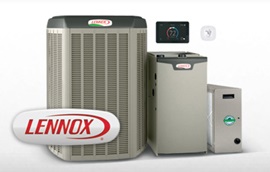The HVAC system covers a wide variety of functions that are designed to improve the indoor comfort in our homes. The furnace, heat pump or boiler work hard to keep us warm through the winter. The air conditioner is ready to keep us cool when summer temperatures peak. Then the ventilation system brings everything together by distributing the required treated air throughout the home and removing pollutants to improve the indoor air quality. These functions work well in isolation, but your HVAC equipment is more effective and efficient when it’s used as an integrated system, where each part works together.
Your heating and air conditioning setup may already function as an interactive system. A home fitted with a forced air furnace and central air conditioning already has the HVAC equipment tied together. Other homes may have their HVAC equipment working separately, for example, an electric resistance heater, a mini split AC, and a separate heat recovery ventilation system. There are too many possible configurations to go into here, suffice to say whatever your setup is, energy efficiency can be gained by integration with smart technology.
In order to do this, the communication barrier has to be broken down, and the best way to do this is to install a smart thermostat. The different parts of the system can then communicate with each other, the smallest amount of energy can be used, and the home can be kept comfortable. The feedback received from a smart thermostat can provide an enormous amount of data on where the most energy is being used and the best ways to conserve more. This will allow you to maintain your level of home comfort, lower your energy bill and save money at the same time.
Reducing Energy Bills:
In recent years, we have seen increasingly larger numbers of homeowners demanding integrated systems. This demand is being met by contractors and manufacturers to reduce energy demands and save their customers money. Many businesses are expanding their range with whole home comfort solutions that use the latest in smart technology. The ability to control the heating and cooling systems in the home by making them work together is very powerful. These smart systems and devices offer a level of control and data about the energy used that would have seemed like science fiction only a few short years ago.
Don’t Forget the Basics:
It’s easy to get caught up in the integrated HVAC approach, but it’s important to keep an eye on the basics. The latest technology can certainly help, but a vital part of an integrated approach to heating and cooling in the home is passive in nature. Insulation is a prime example; even an integrated high efficiency HVAC system will lose many of its energy saving benefits if there are poor insulation values. Air leaks around doors and windows, can dilute the energy efficiency and decrease the levels of indoor comfort. Choosing an integrated HVAC system is a great idea, but the whole home needs to be carefully considered to ensure that maximum energy efficiency is achieved and maintained.

